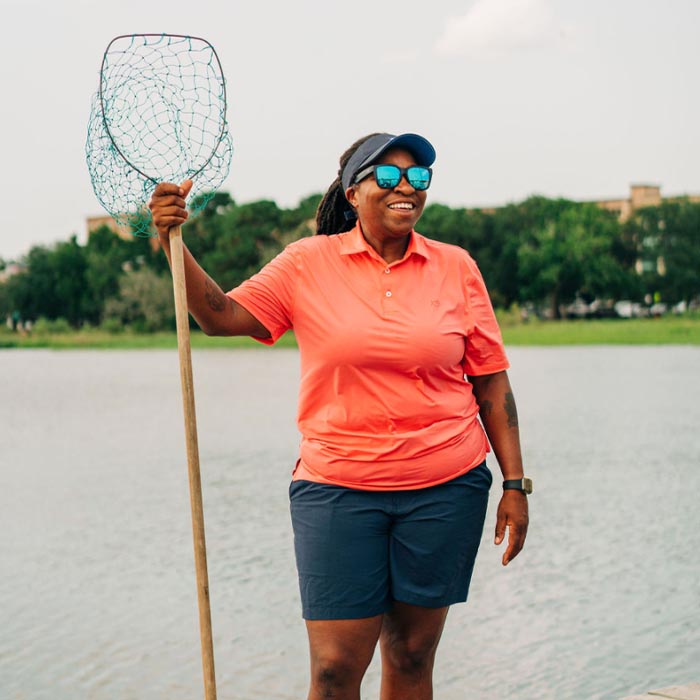How To Catch And Release Fish
If you teach someone to fish, you’ll feed them for a lifetime. If you teach someone how to catch and release fish properly, you’ll keep the tradition going beyond a lifetime.
Okay, so maybe that’s not entirely how the saying goes. But, there’s a lot of truth to it. In order for future generations to enjoy those quiet mornings out on the water fishing, anglers need to know how to release fish unharmed back to the water. Just jumping right in can cause more harm than help. The hooks you use and the methods you’re used to might be killing more fish than you think.
The future of fishing relies on learning the proper techniques and best practices. And knowing how to catch and release fish starts by following the right guide — so just scroll down for ours.
New to fishing entirely? Take a look at our top tips for beginners.
PREPARATION
Before you head out on the water, you’re going to need the right supplies (and we mean more than your favorite pair of floating sunglasses).
- Use circle hooks. A must for all fishermen, circle hooks are designed to be less harmful yet still help you catch the big ones.
- Pinch down your barbs. This will help make it easier to release a fish and with less overall damage.
- Use artificial lures or flies. You don’t want to encourage fish to swallow the hook by using something that’s scented.
Once you got your tackle box at the ready, check to make sure water temperatures aren’t above 68* F. The warmer the water, the more likely fish are to be over-exhausted and stressed out, causing higher fatality rates when you release.
Now, keep your hands wet, stay close and be at the ready.
Psst, don’t forget to make sure you’re following boat safety while you’re at it.
THE TECHNIQUE
Here’s the hard part, understanding the techniques that will make sure the fish you catch go back into the water swimmingly. Understanding just a few tricks can make all the difference.
-
Don’t fight the fish. The more you fight and play with a fish, the more stressful and harder it is to return them safely. A good rule of thumb is to keep the battle under two minutes. Any longer, and your fish will be in a lot of danger. So keep a fish-friendly rubber net nearby to help land the fish if you need.
-
Hold the fish with wet hands.This tip right here can make one of the biggest differences in catching and releasing. Fish have a slime which helps protect their scales from infection, so holding a fish with wet hands can keep that protective barrier in place.
-
Support the fish’s belly, not jaw. When you pull your Catch of the Day up to snap that prize picture, make sure you’re holding the fish horizontally, support its belly, instead of holding it by its jaw. You can create numerous complications for a fish if you hang it vertically.
-
Take care of the hook. If the hook is buried deep, you might need to leave it be, otherwise gently remove the hook using pliers. This may work best for you in the water, but if you do this on your boat or kayak, keep the fish upside down to help them stay calm (it’s weird, but it works!).
- Give the fish CPR. Don’t worry, you won’t need to go mouth-to-gills to help out a fish. CPR means that in still water, you’ll gently hold your catch and move it in an figure-8 to help get the water flowing between its gills. If you’re in running water, have the fish face the current so the water naturally flows through it. Release only when your fish is able to really swim away.
Fish are friends, so the most important thing to do when catching and releasing is making sure you give them a helping hand when putting them back into the water. Don’t be afraid to jump in and get wet — that’s half the fun!
BEST PRACTICES
With the technique down, there’s just a few final tips you should keep in mind.
-
Fish aren’t models, so forget about the photoshoot. Angling to get the right shot means keeping the fish out of water longer and is ultimately more harmful. So have your camera at the ready and snap your pics as quick as possible.
-
Keep out of rock’s way. Don’t set your fish on rocks, grass or any surface that can cause damage to their slime barrier. Even if it’s just for a moment, a fish’s scales are sensitive and easily harmed. So make sure your always being careful and mindful.
- Leave no trace. And last but not least, always make sure you clean up any mess and keep litter out of our waters for the next person to enjoy.
Figuring out just how to catch and release fish can save the tradition for generations to come. So be sure to bookmark this page and use it as a reference during your future fishing trips.













